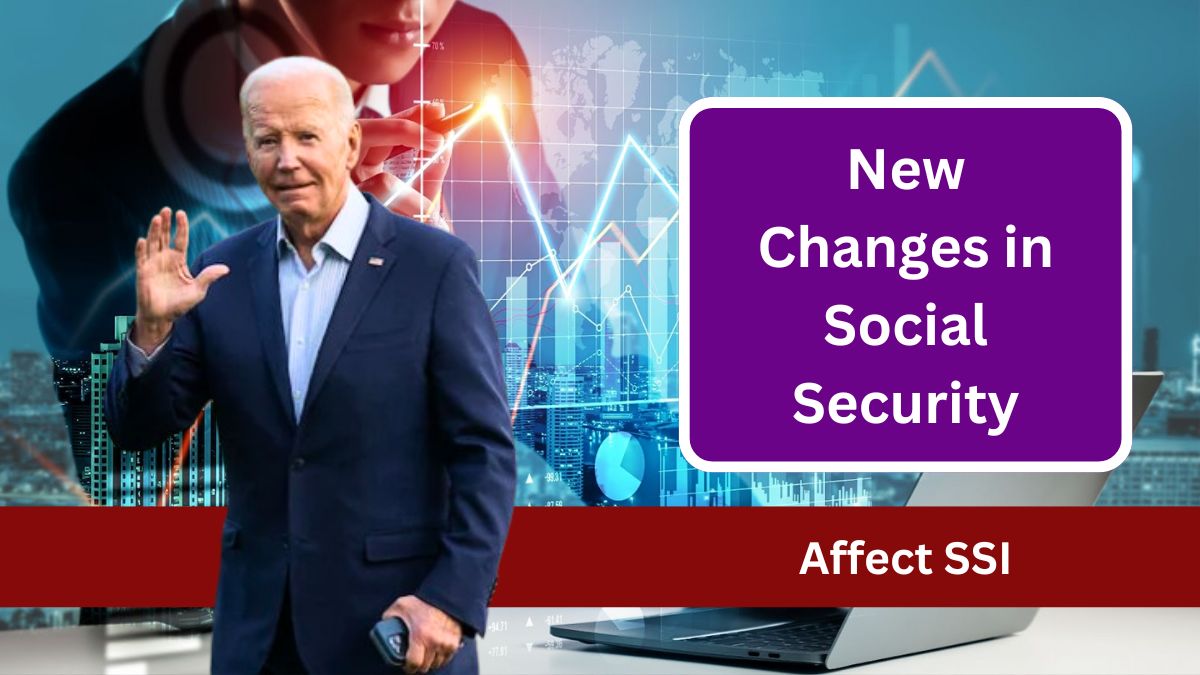The Social Security Administration (SSA) has introduced important changes aimed at making it easier for individuals to access Supplemental Security Income (SSI) benefits. These modifications are expected to broaden the eligibility pool and increase monthly payments for many recipients. Among the key updates are the removal of food from in-kind support and maintenance (ISM) calculations and the expansion of rental subsidy policies nationwide.
Let’s break down what these changes mean for SSI beneficiaries and how they simplify the system.
Food Calculations
One of the most significant updates involves the SSA no longer including food assistance in ISM calculations. Previously, if someone received food from friends or family, it was considered “unearned income,” which reduced their SSI benefits. For example, if you received informal help with groceries, your SSI payment might have been lower, as that support was seen as a financial benefit.
With this change, informal food assistance will no longer affect the amount of SSI benefits a person can receive. This adjustment simplifies the payment calculations and provides more consistent monthly SSI payments. Beneficiaries will no longer experience fluctuations in their payments due to receiving food help from loved ones.
How This Helps Recipients
- More Stability: SSI recipients will now have more predictable payments each month, without worrying about informal food support lowering their benefits.
- Simplified Rules: Removing food from ISM calculations reduces confusion, making it easier to understand how much a person can receive.
Nationwide Expansion
Another major change is the expansion of the rental subsidy policy, which was previously available only in seven states but now applies nationwide as of October 1st. This new rule reduces the penalty for those living in subsidized housing or receiving discounted rent.
Previous Rule
Under the old system, if someone rented an apartment at a lower price due to a subsidy (for example, paying $600 for a home with a market value of $800), the difference ($200) was deducted from their SSI benefits. This rental assistance was considered as a benefit, reducing the monthly payments for recipients.
New Rule
With the new regulation, rental subsidies have a reduced impact on SSI benefits. This means that individuals living in subsidized housing will be able to receive higher SSI payments, allowing them to keep more of their income while still benefiting from reduced rent.
| Scenario | Before Change | After Change |
|---|---|---|
| Market Rent: $800 | Deduct $200 from SSI | No deduction |
| Rent Paid: $600 | Lower SSI Payment | Higher SSI Payment |
Broader Definition
The SSA has also updated its definition of households that receive public assistance. Previously, only households where every member received some form of aid were classified as public assistance households. Now, households can qualify for this classification even if only some members receive assistance, such as SNAP (Supplemental Nutrition Assistance Program) benefits or other public aid.
SSI Eligibility
This broader definition makes it easier for individuals living in such households to qualify for SSI benefits. For example, if one person in a family receives public assistance, others in the household may now find it easier to access SSI benefits, reducing the application and reporting burden for these families.
Positive Impact
These changes are expected to have a significant positive impact on SSI recipients. The SSA aims to simplify the rules, making the system easier to navigate for low-income individuals. As a result, many SSI recipients will receive increased monthly payments and face fewer hurdles during the application process.
Key Benefits
- Higher Monthly Payments: With food removed from ISM calculations and fewer penalties for rental subsidies, recipients should expect larger SSI payments.
- Simplified Process: The new rules reduce the complexity of applying for SSI, making it easier for individuals to receive benefits.
- Increased Eligibility: More households will qualify for SSI due to the broadened definition of public assistance households, making benefits more accessible to those in need.
SSA’s Goal
According to Social Security Commissioner Martin O’Malley, these changes are part of a larger effort to reduce barriers and make the system more efficient for applicants and agency staff alike. By simplifying the rules and eliminating unnecessary penalties, the SSA aims to ensure that more people can access the benefits they are entitled to without undue complications.
These updates reflect a positive shift in how the SSA supports individuals in need, helping to create a more inclusive and accessible system.
FAQs
What is the biggest change to SSI rules?
The removal of food from ISM calculations means receiving food support from friends or family no longer reduces your SSI benefits.
How does the new rental subsidy policy affect SSI payments?
The new policy reduces the impact of rental subsidies on SSI payments, allowing recipients to receive higher monthly benefits.
Who benefits from the expanded public assistance definition?
Households with some members receiving public assistance (like SNAP) may now find it easier for other members to qualify for SSI benefits.
When did these changes take effect?
The changes took effect on October 1, 2024.
What is the goal of these SSI changes?
The SSA aims to simplify the SSI process, increase benefit amounts, and broaden eligibility for more individuals.











